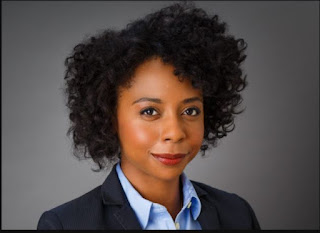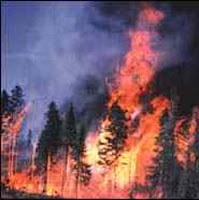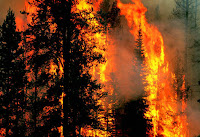Reflections following the, now forgotten, Briahna Joy Grey’s tweeter storm over the alleged whiteness of Jews.
Briahna Joy
Grey, a left-wing activist and a former aide to Bernie Sanders, asked in one of
her regular podcasts, if Jews are white. She didn’t just ask it. It was the
title of her February 25th podcast “The Debrief.” This may seem a simple
matter to a non-Jew, but it is anything but. While Judaism as a way of life and
a system of values has no interest in people’s skin color, Jews have complex
relationships with the subject. Therefore, there is a lot of genuine discussion
to be held here. However, asking if Jews are white is probably the worst way to
open any discussion on the matter.
 |
| Briahna Joy Grey |
When it comes to the physical, physiological, facts on the ground, melanin; Jews are shades. A range of different shades of skin color from black to white, mostly shades of brown. But at the social level things are complicated. Complicated by the different experiences Jews and other minorities, had in Europe and North America. While in both continents there were lengthy periods of intolerance and violence towards many of these minorities; there were still differences. Differences that are known, but not so easily understood.
Jews are
one of many marginalized European and Middle Eastern communities that made it
in the USA. An America that for the greater part of its existence, being white
was one of the highest social statuses. Succeeding in such America was not a
given. It was a tough struggle against intrench prejudices. Prejudices that
originated in the world they left behind. A world that punished them, violently
and brutally, whenever they tried to improv their situation. And even when they
didn’t.
The America
they came to was doing the same thing. Not to them. To African Americans, and to
Native Americans. (As well as visiting this mistreatment on Hispanics and East
Asians populations). On one hand the Jewish experience in North America did not
include the systematic abuse perpetuated on African Americans and Native
Americans. On the other hand, the ideas that justified this mistreatment were
similar to those that justified the systematic abuse Jews have suffered from in
Europe. And in this new home Jews were viewed in ways that were not far removed
from those European perceptions. Those were, and are, the same European misperceptions.
These are ideas that got them [us] killed in countless pogroms and persecutions.
American Jews never lost sight of the fact that no matter how successful they are,
those ideas are alive and well all around them. And occasionally produce
murderous violence against them. This is why those differences are
insignificant for Jews. Yes, murderous violence is not as recurring as on the
“Pale of the Settlements.” At the same time, it is not that far behind.
However, for
African Americans those differences are very significant. They saw the Jews
take the white only sits on the bus, drink from the white only fountain, and
enter the white only stores. And most importantly, Jews could vote, while African
Americans were prevented from that. And of course, as mention previously, Jews
in the USA did not have to worry from lynch mob as much as African Americans had
to. From an African American pov Jews were on the white side of life, enjoying
a degree of safety unavailable to most, if not all, African Americans. Europe,
a continent on the other side of the ocean, was irrelevant. This does not
dispute the fact the Jews were discriminated against in USA. Not to mention the
confidence by which antisemite agitators such as Henry Ford, Charles Coughlin,
and others, could spread their hatred. The difference is that the oppression of
black people and Native Americans was official policy in both state and federal
levels. That allowed private initiatives among white Americans to create lynch
mobs, and other forms of murderous violence. This also inspired discrimination
against Jews. But it was mostly a private initiative. In stores that decided
not to allow Jews to enter, private clubs, etc.
These
differences are why African Americans experienced Jews as white. The threat to
their lives was, and is imminent. Any pause that could be given would be
considered luxury. And in many ways, it is. This is why Briahna
Joy Grey, found it so amazing that Americans don’t consider Barbara
Streisand white. For her it was amazing. But for mainstream America, an openly
Jewish person is not white; even without the traditional dress. Knowing that
makes her amazement understandable. And to be clear, I don’t think all African
Americans see the Jews that way. I’m sure many understand the complexities of the
Jewish situation. At the same time, I’m sure Briahna Joy Grey views are not uncommon
either. But they all share the same experiences, current and historic. And
because of that the outrage, justifiable without a doubt, has to take a step
back. And not just because of that.
What both
sides need to know, and internalize is that the similarities between the
oppression of Jews in Europe and Afro-Americans in the USA, does not always have
a mutual healing effect. On the contrary, in many cases it hurts and enrages.
And it even frightens. And that is probably the worst thing of all. Briahna Joy
Grey’s podcast, and the tweeter storm that followed, is a good example. Because
when Jewish identity is discussed by non-Jews troubles begin. And the rise in
hate crimes against Jews demonstrates that; as it always did. Challenging the
identity of Jews is done in two known ways. The first is challenging their loyalties
to the countries they live in. Are they true Russians, Germans, Pols, Egyptians,
Iraqis, Iranians, Americans, etc. or something else? With National Socialism
challenging their very place in the human race. Each case was a precursor of
atrocities. And in many instances, the engine of those atrocities. Asking if
jews are white, intentionally, or unintentionally, challenges the current and
historic roll Jews have in the cause of civil rights. Intentionally, or unintentionally,
it challenges their loyalty to that caus. A cause their lives were and are
dependent on. Therefore, the outrage Briahna Joy Grey received wasn’t just
unavoidable. It was also an expression of survival instincts kicking in.
And just as
the harsh Jewish experience created survival instinct among Jews. So did the
African American experience. An outrage like this, justified or not, can kick
start their survival instincts just the same. And what good would that do?
Creating a shouting match between two communities that have no interest in
oppressing each other? Both are deeply wounded. Those wounds need healing.
Rage, no matter how justified, does not heal.
Briahna Joy
Grey may not have intended to challenge Jewish identity, but she internalized and
used the language and tools of oppression. And we, as Jews, must never rule out
the possibility that we have done the same. I’ll be surprised if we hadn’t.
The second
constant feature of hatred of Jews was labeling them with whatever is
considered the worse possible evil of the period. This is what Batya
Ungur-Sargon tried to explain to her in the preceding discussion in her other
podcast “Bad-Faith”. In Medieval Europe Jews were falsely accused of being
Christ killers that drunk the blood of Christian children for Passover. In Nazi
era Germany, we were labeled a sub-human race bent on conquering the world.
(Who in their right minds would want the headache of managing the entire
world?). In Soviet Russia, Zionists, a euphemism for Jews, were capitalists,
the most corrupt element of any society according to Marxist ideology. In the
western world, rightwing antisemites see the Jews as Bolsheviks. Today we are considered
nonwhites by white supremacists, and whites by far left (supposedly) anti
racists that see whiteness as the evilest thing there is. So, when she later asked
if Jews are white, people got mad. But we can do the same kind of mistake. And
like it or not, we have internalized some of the ideas of white supremacy. As
most of the world did.
This is a
living historical legacy that does not get its due attention. Today the ideas
of white supremacy are recognized as evil, stupid, and oppressive. They were
like that all the time. But so much was invested in spreading them, in arguing
for them, and in living by them that they were internalized by people world
over. It took centuries for the ideas of tolerance and mutual acceptance, to
gain the resources needed for spreading all over the world. This made it
possible for them to challenge, and expose, the corrupt, immoral and evil
nature of white supremacy. There is still a lot of work to be done on this in
order to undo that evil. And it cannot be done adequately while ignoring that
antisemitism was spread and internalized in the very same manner. And the same
goes for the fight against antisemitism. This is why we, as Jews, must cleans
ourselves from this poison. We must do so for our own best interest. And not
just as a result of a concern for our own image. The two struggles are still
connected like conjoined tweens. Just, not identical conjoined tweens. And that
is another reason to take a step back. And we have internalized some of those
ideas. Just as many African Americans internalized the ideas of Antisemitism
and Jew hatred.
Internalizing
ideas of white supremacy does not mean that Jews want to be white. This
insensitive equation/ slash accusation, is a part of the package of
misperceptions when the issue of Jews, race, and color, is raised. Jews don’t
want to be persecuted and discriminated against. That means been accepted by
the general society. And for many decades this meant, unofficially, be seen as
white. Today it means having non-Jews stop defining Jewish identity. But the
result of the previous condition was that Jews have internalized, to a degree,
ideas and perceptions that came from white supremacy. As did a lot of other
societies that lived under the shadow of the globally dominated white Christian
European culture. There were other contributing factors. The desire of
individuals to imitate elements from any successful culture. And the lack of
any counter ideology, active among those ethnicities and religions that could
challenge the evil of white supremacy. Such ideologies rose to prominence, only
in the last 100 years. Jews in this regard are no different than many others.
For non-Jews to focus only Jews, that is not just hypocrisy; it is
antisemitism. It creates the false impression that Jews had a more significant
contribution for slavery and racism in North America than others. And that is a
demonizing blood libel that exonerates the main perpetrators. That said, again,
we did internalize the tools of oppression of African Americans, and black
people in general. In cleansing ourselves from this evil, we take a major step
in defining our identity, our fate. This is another way of keeping non-Jews
from defining our Jewish identity. And that is another reason for the rage to
take a step back. Jews, like many others, had lived for centuries under the
shadow of the white, European Christian culture. A global culture that believed
and practiced the ideas of white supremacy and antisemitism. Today that shadow
is substantially diminished. It gives us, Jews, the opportunity to let our own
true self to shine. In order to that we need to find it. Rage is not exactly
useful for that purpose.
Another
reason to take a step back is humbleness and humility. Yes, the question of
whether Jews are white shouldn’t have been asked. But it comes from an
insensitivity we are equally able to practice. And most likely do. And despite
the wounding effects of the differences between the two repressive experiences;
the struggle against the ideologies that motivates them is the same struggle,
because these are the same ideologies. We
all need to understand that a part of the internalization of tolerance is
giving the benefit of doubt to those that outrage us. Unless negative
stereotypes were deliberately, and constantly, defended and advocated, the rage
had to subside quickly. As I hope it did; though that may never be known, since
the events in the Ukraine have taken center stage, and pushed everything else
to the sidelines.
We, as
Jews, must understand that when it comes to conversations about race, we can
make the same misjudgment. Frankly, I’ll be surprised if we don’t. The benefit
of doubt gives everybody the room to discuss both racism and antisemitism. And
that discussion is necessary, especially if it wounds. As it clearly does.
Finally, any
outrage is self-consuming. And when it is justified, we are less aware of it.
And even the most justifiable outrage does not justify a shutting off of
opportunities for constructive communication. No matter how narrow they are.
P.S
As I was writing this piece, this forgotten episode made a comeback. Following the twitter storm, Briahna Joy Grey gave an interview on that experience to Coleman Hughes. I didn’t get to see it, because I was working on this. And because I’m a bit of a technophobe. But the add to that interview includes an incomprehensible quote, probably from her.
Related links:





